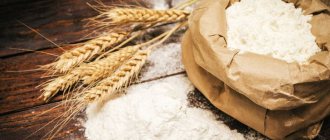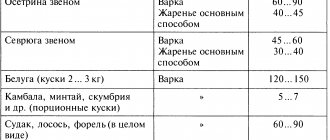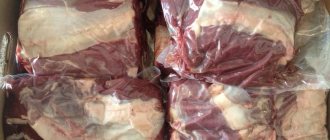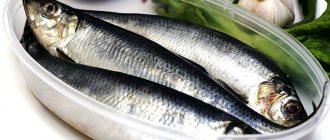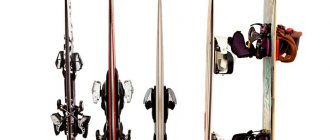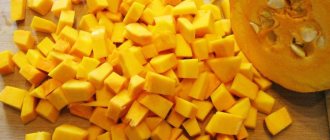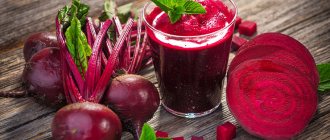How to store canned fish
Canned fish can be stored for no more than 2 years, regardless of the type of sauce used.
This is due to the “aging” processes that occur in fish meat faster than in pork or beef. As a result, the product gradually loses its original quality.
Sprats occupy a special place among canned foods, so we have dedicated a separate article to them.
But this does not apply to preserves, which are made without heat treatment and with a large number of preservatives. The shelf life of preserves depends on the composition of the marinade and is indicated by the manufacturer.
Opened canned fish should be stored as follows.
- The remainder of the product is transferred to a glass or ceramic container.
- Then it is tightly closed and sent to the refrigerator.
The fish will need to be consumed within 2 days. But if the fish meat is completely covered with oil, this time increases by 2 times.
store preserved food after opening the container for no more than 4 - 8 hours, since this product does not undergo heat treatment and deteriorates faster.
Technologies for preserving the freshness of preserves
Preserved fish are products that Russian consumers love very much. And for good reason, because in the production of this product the fish is not subjected to heat treatment and retains all its beneficial properties. However, due to the lack of the mentioned processing stage, preserved fish cannot be stored for as long as, for example, canned food or frozen semi-finished products.
Igor Gromov, Development Director of Vesta-VAR LLC, and Anna Smagina, Senior Researcher at FSUE VNIRO, will talk about ways to extend the shelf life of preserves
What conditions must preserved food producers comply with in order to deliver a high-quality product that is safe for consumers?
Igor Gromov
: Improving the technology for making preserved herring is currently going in various directions, including:
- development of new compositions of food additives in order to improve the consumer characteristics of the finished food product (including for storing preserves at positive temperatures);
- development of new recipes for sauces and fillings for preserves;
- introduction of new types of packaging.
- One of the most difficult tasks facing technologists today is the requirements of retail chains for the temperature (from 0° to +5°C) and shelf life (at least 2-3 months) of preserved products.
To maintain the high organoleptic properties of preserves, it is necessary to observe the temperature regime at all stages of production, as well as the continuity of the cold chain from production to consumption. In addition, compliance with the production process management system and strict quality control and compliance with sanitary standards are very important. Also, the production of high quality preserves with a long shelf life is unthinkable without the use of modern food additives.
Finally, in order to produce a high-quality product, it is necessary to develop innovative equipment that will help automate the process. The main task of automating the production of preserves is to create equipment that is incompatible with manual labor at all stages of the technological cycle: preparing brine in a salt concentrator, loading, salting, washing and unloading fish, washing equipment. This will improve the microbiological purity of the entire production process, and therefore the finished product.
The most dangerous for the consumer is spoilage associated with exceeding the standard microbiological indicator, since in other cases the product is not consumed due to clearly visible negative signs.
– What ingredients and technologies are used to preserve the freshness of preserves? Talk about their advantages and disadvantages.
– Anna Smagina:
In the Russian Federation, sodium benzoate (SBA) is usually used as an antiseptic in the production of preserved fish. However, based on previously established studies, it is known that BCN as a preservative has an insufficiently high coefficient of impact on microflora. At the same time, it exhibits signs of toxicity, due to which in a number of countries its use is either limited or prohibited; gives the product a foreign (metallic) taste; difficult to dissolve in a mixture with other components.
Preservatives also include sorbic acid and its salts (sorbates). Sorbic acid inhibits the growth of most microorganisms, molds, and yeasts without changing the organoleptic properties of raw materials.
In the UK, the preservative nisin (peptide antibiotic) is produced under the brand name Nisaplin. It inhibits the growth of gram-positive microorganisms, as well as Clostridium botulinum, Clostridium sporogenes,
but nisin does not act on some bacteria isolated from preserves. This means that preserves must be stored at low temperatures (about -6°..-8°C).
The preservative effect of salt is somewhat enhanced when preparing delicate, lightly salted fish products with added spices due to the action of the essential oils they contain. In terms of the strength of their inhibitory effect on microorganisms, spices are unequal; they can be ranked from the least effective (cardamom, coriander, nutmeg, etc.) to the most effective (cinnamon, cloves, mustard). However, inhibition of microflora occurs at relatively high concentrations of essential oils. In this regard, at generally accepted dosages, spices have only a weak bacteriostatic effect.
Among the technological aspects of increasing the stability of preserves, it is necessary to highlight:
- the presence of a preservative and its introduction in the right quantity and at the right technological moment;
- development of the composition of sauces and fillings, regulation of their pH;
- compliance with temperature and time conditions at all stages of production and storage, as well as sales conditions in the retail network.
- In trade, it is important to ensure that preserves are constantly stored in the refrigerator at the required temperature and that they are sold in a timely manner. Damage to containers and packaging and over-ripening of its contents should not be allowed. To improve the quality of products, it is necessary to widely use new functional, flavoring and decorative additives, which help stabilize the quality of the product during storage and make the product more attractive to buyers.
The preservative effect of an antiseptic depends on its chemical nature, concentration, temperature conditions, and pH of the environment. At the same time, practically no preservative is universal, and to enhance the antimicrobial effect it is necessary to use a combination of several substances.
Due to the fact that inhibition of the vital activity of microorganisms and their death depend on many reasons, it is advisable to use mixtures of preservatives with an extended spectrum of action. Mixtures of preservatives are selected in such a way that some substances complement others.
Currently, in the production of preserves, to increase the safety of products during storage, a combination of preservatives with organic acids (acidity regulators) is increasingly used. Acidity regulators are substances that establish and maintain a certain pH value in food products. For the life activity of the vast majority of microorganisms, the optimal pH values lie in the range of 6.5-7.5, so a decrease in pH to 4.5-5.0 causes the death of such microorganisms. However, there are types of microorganisms that can develop even at a pH of 2.5-4.0.
When making preserves from normally maturing fish, including herring, it is recommended to regulate the rate of hydrolysis by changing the storage temperature and pH value of the medium. pH regulation is achieved by adding food acids or alkalis during salting. Russian experts have found that the development of microorganisms in preserved herring is best suppressed by the following combinations of organic acids: citric acid with tartaric and sodium acetate, tartaric acid with sodium citrate, and citric acid with tartaric.
Many preserved fish use fillings containing vinegar. Acetic acid acts as an acidity regulator. Of all the flavoring acids, acetic acid has the strongest inhibitory effect on microorganisms, primarily on bacteria of the genus Clostridium.
The problem of slowing down lipid oxidation is relevant, including in the production of preserved products. As a result of the oxidative destruction of lipids, raw materials and products made from them lose quality and become unsuitable for use. Fat oxidation is a very significant defect that occurs when storing salted fish. In the Russian Federation and abroad, in recent years, much attention has been paid to natural additives, as well as natural substances with antioxidant properties.
Antioxidants used in the production of preserves include ascorbic, isoascorbic acids and their salts, etc. For example, adding sodium ascorbate in combination with sodium citrate and nicotinic acid amide stabilizes the color of herring, cod, pollock caviar, as well as tuna and whale meat.
The use of ascorbic acid together with citric acid enhances its inhibitory effect, increasing the shelf life of the finished product.
Thus, in order to ensure the quality and safety of preserved products, it is urgent to develop complex (composite) food additives of a new generation that have preservative and antioxidant properties at the same time.
In particular, a technology for the production of preserved fish from lightly salted herring has been developed, experimentally confirmed, implemented and used at fish processing enterprises, which makes it possible to obtain a product with improved consumer characteristics. According to this innovative technology, the complex food additive “Varex-14” is used, which makes it possible to increase the stability of preserves during storage. Thanks to the use of preservatives that are effective at positive storage temperatures, it has become possible to preserve preserves in various sauces and fillings for up to 65-100 days at temperatures from 0° to +5°C and up to 120 days at temperatures from -5° to 0°C.
The range of preserves made from lightly salted herring is extremely wide due to the use of various raw materials, types of herring cutting and various fillings (oil, wine, mustard, etc.). Research has shown that the Varex-14 food additive is universal: it can be used in various technological schemes, for whole herring and fillet pieces, and helps maintain the microbiological safety and nutritional value of preserves during prolonged storage at positive temperatures.
Since both Atlantic and Pacific herring are used as raw materials today, we examined both types of fish. They differ quite strongly in the content of proteins and lipids (Pacific herring can be classified as particularly fatty fish with an average protein content, and Atlantic herring, on the contrary, as less fatty, but with a high protein content), so our study made it possible to objectively assess the effectiveness of Varex- 14" on various raw materials.
Studies of samples of preserves made from Pacific and Atlantic herring using Varex-14, in oil and other sauces and fillings (without vegetable oil) showed striking results. When the value of total bacterial contamination (QMAFAnM) in control samples (made using BCN as a preservative) exceeded the maximum permissible level, a musty odor, soft, flaky consistency and yellowness were noted on the surface of fillet pieces, test samples (made using Varex- 14") at the same control point met the established requirements.
During the specified storage period, the muscle tissue of Atlantic and Pacific herring in the experimental samples of preserves remained uniform in color, without yellowness, with an aromatic odor characteristic of the smell of ripe herring, the juicy consistency was preserved, and the taste was pleasant, lightly salted, without the taste of oxidized fat, which indicates about the effectiveness of the food additive used. The oil (fill) remained transparent, without any foreign odor.
– Tell us about the main advantages of your technology.
I.G.:
The advantages of the technology are as follows:
- possibility of storing preserved herring at positive temperatures from 0° to +5°C;
- extended shelf life: preserves in vegetable oil – up to 65 days; in other sauces and fillings – up to 100 days;
- maintaining high organoleptic characteristics and natural taste of ripened herring throughout the entire shelf life;
- safety of the food additive "Varex-14" (does not contain harmful ingredients such as sodium benzoate, parabens, antibiotics, etc.).
- “Varex-14” acts in a comprehensive manner: it effectively slows down spoilage processes, prevents the appearance of undesirable flavors (oxidized fat, bitterness, etc.), promotes ripening, and ensures the microbiological safety of finished products.
The ability to store preserved herring at positive temperatures plays a very important role when retail chains choose their suppliers, since in stores there are practically no refrigeration units designed for low negative temperatures (from 0° to -8°C), and violation of temperature conditions during storage and transportation significantly reduces the taste of preserves. “Varex-14” provides a “safety margin” for the product at temperatures up to +5 °C.
– Is it possible to extend the shelf life of preserved fish and at the same time keep the label clean? How?
I.G.:
If “label clean” means the absence of food additives with an “E” index, then the task of maintaining this purity seems difficult to achieve. According to the requirements of the recently introduced Technical Regulations of the Customs Union, all food additives with an “E” index must be indicated on the label.
However, Russian scientists have tested the technology for producing preserves from Pacific herring, the fillings of which use rowan juice, an extract from crushed rowan fruits and a decoction of whole berries. Organic acid isolated from rowan berries - sorbic acid (E200) - a natural preservative. Rowan fruits and rowan juice have a detrimental effect on Staphylococcus aureus, Salmonella, and mold fungi. In addition, rowan berries have a pleasant aroma, giving a specific taste to the finished product.
By adding rowan berries and rowan juice to the fillings, the manufacturer thus introduces natural sorbic acid, and not in the form of the E200 food additive. In this case, there is probably no need to indicate E200 on the label.
– What is the role of packaging in extending the shelf life of preserves?
A.S.:
Modified atmosphere packaging (MAP) is an alternative to vacuum packaging, in which, in the absence of oxygen, the vital activity of aerobic microorganisms, including some that cause organoleptic spoilage of the product, is suppressed.
The essence of using MGS is to change the gas composition in the packaging of the product, primarily to prevent fat oxidation and suppress the vital activity of microorganisms. But a significant disadvantage of vacuum packaging is the possible deformation of many types of products, which is associated with the tight fit of the film to the product. But it is important to note that the production of products using MGS allows you to maintain quality and safety within a reasonable time frame and without the use of chemical preservatives only under the conditions of correct manufacturing practices and in compliance with all requirements for the technological process. Fish sphere. – 2015. – No. 1 (12). – P.32-36
At what temperature should preserves be stored?
Preserved fish are products that Russian consumers love very much. And for good reason, because in the production of this product the fish is not subjected to heat treatment and retains all its beneficial properties. However, due to the lack of the mentioned processing stage, preserved fish cannot be stored for as long as, for example, canned food or frozen semi-finished products.
Development director of Vesta-VAR LLC Igor Gromov and senior researcher at FSUE VNIRO Anna Smagina will talk about ways to extend the shelf life of preserves.
What conditions must preserved food producers comply with in order to deliver a high-quality product that is safe for consumers?
Igor Gromov: Improving the technology for making preserved herring is currently going in various directions, including:
- development of new compositions of food additives in order to improve the consumer characteristics of the finished food product (including for storing preserves at positive temperatures);
- development of new recipes for sauces and fillings for preserves;
- introduction of new types of packaging.
- One of the most difficult tasks facing technologists today is the requirements of retail chains for the temperature (from 0° to +5°C) and shelf life (at least 2-3 months) of preserved products.
To maintain the high organoleptic properties of preserves, it is necessary to observe the temperature regime at all stages of production, as well as the continuity of the cold chain from production to consumption. In addition, compliance with the production process management system and strict quality control and compliance with sanitary standards are very important. Also, the production of high quality preserves with a long shelf life is unthinkable without the use of modern food additives.
Finally, in order to produce a high-quality product, it is necessary to develop innovative equipment that will help automate the process. The main task of automating the production of preserves is to create equipment that is incompatible with manual labor at all stages of the technological cycle: preparing brine in a salt concentrator, loading, salting, washing and unloading fish, washing equipment. This will improve the microbiological purity of the entire production process, and therefore the finished product.
The most dangerous for the consumer is spoilage associated with exceeding the standard microbiological indicator, since in other cases the product is not consumed due to clearly visible negative signs.
– What ingredients and technologies are used to preserve the freshness of preserves? Talk about their advantages and disadvantages.
– Anna Smagina: In the Russian Federation, sodium benzoate (SBA) is usually used as an antiseptic in the production of preserved fish. However, based on previously established studies, it is known that BCN as a preservative has an insufficiently high coefficient of impact on microflora. At the same time, it exhibits signs of toxicity, due to which in a number of countries its use is either limited or prohibited; gives the product a foreign (metallic) taste; difficult to dissolve in a mixture with other components.
Preservatives also include sorbic acid and its salts (sorbates). Sorbic acid inhibits the growth of most microorganisms, molds, and yeasts without changing the organoleptic properties of raw materials.
In the UK, the preservative nisin (peptide antibiotic) is produced under the brand name Nisaplin. It inhibits the growth of gram-positive microorganisms, as well as Clostridium botulinum, Clostridium sporogenes, but nisin has no effect on some bacteria isolated from preserves. This means that preserves must be stored at low temperatures (about -6°..-8°C).
The preservative effect of salt is somewhat enhanced when preparing delicate, lightly salted fish products with added spices due to the action of the essential oils they contain. In terms of the strength of their inhibitory effect on microorganisms, spices are unequal; they can be ranked from the least effective (cardamom, coriander, nutmeg, etc.) to the most effective (cinnamon, cloves, mustard). However, inhibition of microflora occurs at relatively high concentrations of essential oils. In this regard, at generally accepted dosages, spices have only a weak bacteriostatic effect.
Among the technological aspects of increasing the stability of preserves, it is necessary to highlight:
- the presence of a preservative and its introduction in the right quantity and at the right technological moment;
- development of the composition of sauces and fillings, regulation of their pH;
- compliance with temperature and time conditions at all stages of production and storage, as well as sales conditions in the retail network.
- In trade, it is important to ensure that preserves are constantly stored in the refrigerator at the required temperature and that they are sold in a timely manner. Damage to containers and packaging and over-ripening of its contents should not be allowed. To improve the quality of products, it is necessary to widely use new functional, flavoring and decorative additives, which help stabilize the quality of the product during storage and make the product more attractive to buyers.
The preservative effect of an antiseptic depends on its chemical nature, concentration, temperature conditions, and pH of the environment. At the same time, practically no preservative is universal, and to enhance the antimicrobial effect it is necessary to use a combination of several substances.
